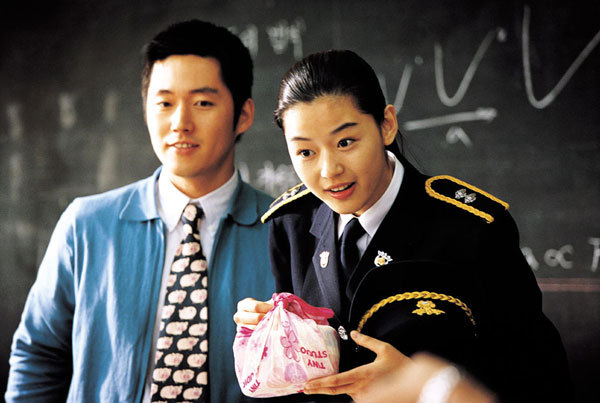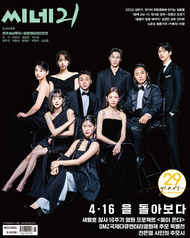한국영화의 국제적 성공은 이전의 한국영화가 거의 모습을 드러내지 않았기 때문에 고정된 기대가 없었다는 사실에 상당 부분 빚지고 있다. 주요 영화제와 세일즈 대행사 그리고 배급사들은 아시아 지역에 특정 종류의 영화를 요구한다. 중국영화는 억압받는 주인공들을 다뤄야 하며 감독이 억압하의 불법적인 배경에서 만든 것이어야 한다. 대만영화는 정적인 롱테이크와 클로즈업을 엄격하게 자제하는 스타일 속에서 허무적인 깡패와 창녀들에 관한 이야기를 예술영화로 풀어내야 한다. 필리핀영화는 게이 바의 춤추는 남자들의 몸을 보여주는 동시에 무거운 사회적 이슈에 초점을 맞추어야 한다. 만약 한국영화가 스테레오 타입을 갖고 있었다면, 미군기지촌의 바걸이나 샤머니즘, 눈내린 산에서 오도 가도 못하게 된 스님들에 관한 모호한 이미지 정도였다.
아시아를 휩쓸고 있는 한류의 성공에서 미처 언급되지 않았으나 결정적인 요인은 일반 관객의 민족차별주의에 대한 변화이다. 1997년 박기영 감독의 <모텔 선인장>은 제2회 부산국제영화제에서 월드 프리미어를 가졌다. 박기영, 봉준호 공동각본에 크리스토퍼 도일이 촬영한 이 영화는 정우성, 진희경, 박신양, 이미연 등의 아름다운 20대들이 주인공으로 출연했다. 영화는 세계 영화제를 돌며 상영됐고, 홍콩의 작은 영화사가 배급하려고 이 영화를 샀다. 그러나 당시 어떤 극장주도 한국영화에 자리를 내줄 준비가 돼 있지 않았다. 그리고 그 극장주들은 배급사에 홍콩 관객은 한국인들을 깔본다고 말했다. 지난 십년간 얼마나 많은 변화가 있었던가. 1999년 마지막 몇달에 빌 콩의 에드코 필름은 확신의 도약을 이루어 두편의 화려한 전적을 갖춘 한국영화 <8월의 크리스마스>와 <쉬리>를- 전자는 홍콩 아트센터와 협력하여- 배급했다. 홍콩에서 <쉬리>를 돈 주고 본 관객이 10만명이 넘으면서 고정관념은 완전히 깨졌다. 에드코는 그 뒤로 홍콩 박스오피스에서 10억원 이상 번 세편의 한국영화 <엽기적인 그녀> <조폭마누라> <내 여자친구를 소개합니다>를 배급했다.
홍콩에서 한국영화를 터뜨린 것이 상업적 조직이었다는 사실에 주목할 필요가 있다. 홍콩국제영화제가 한국영화 관객층을 형성하는 데 역할을 한 것은 오직 한번뿐이었는데 2000년 4월에 <주유소 습격사건> <질주> <반칙왕>을 매진으로 상영했을 때다. <반칙왕>은 당시 한국 개봉 뒤 두달밖에 지나지 않았던 시점에서 이뤄진 국제 프리미어였다. 이것은 이례적인 일이었다. 영화제 정규팀이 1년 동안 휴지기를 가지면서 “비전문가적인” 프로그래머들에게 영화 선정권이 돌아갔었을 때다. 반면 올 4월 개최될 홍콩국제영화제의 프로그램은 엄격하게 예술영화로만 짜였다. <피터팬의 공식> <사과> <방문자>는 모두 다 홍콩 개봉은커녕 한국에서도 극장 개봉을 하려면 기다려야 하는 종류의 작품들이다.
상업 배급업자들이 간극을 메우고 있는 만큼 홍콩국제영화제가 더이상 한국 대중영화를 지지하는 역할을 할 필요가 없다는 주장을 할 수도 있다. 2006년은 분명한 방향성의 부재로 국제적 위상이 흔들리고 있는 부천국제판타스틱영화제가 10회째를 맞이하는 해다. 부천영화제가 쇄신하여 지역 영화제로서는 드물게, 아시아 지역에 걸쳐 일반 관객이 즐기는 대중영화에 초점을 맞추는 영화제로 정체성을 새로이 할 수 있는 최상의 기회다. 이웃 나라의 관객을 이해하지 않고서 한국영화는 아시아 수출시장을 유지할 수 있을 거라 장담할 수 없다. 그런데 여기에는 또한 아시아 관객이 한국인들을 우러러보면서 한국인들이 아시아 이웃들을 깔보기 시작할 수 있다는 위험성도 존재한다.
The international success of Korean film owes much to the fact that it was a largely invisible cinema with a lack of fixed expectations. Major festivals, sales agents and distributors demand a specific kind of film from Asian territories: Chinese films should be illegal underground fare from oppressed directors about oppressed protagonists; Taiwan films should be arthouse tales of nihilistic gangsters and prostitutes with long static takes and strict avoidance of the close-up; Philippine films should focus on heavy social issues with their share of gyrating male torsos in gay bars. If Korean cinema had a stereotype, it was something vague to do with bar girls at American bases, shamanism and monks stranded up snowy mountains.
The critical but unspoken factor in the success of the Korean Wave across Asia is a shift in racism from general audiences.
In 1997, Park Ki-yong's Motel Cactus [모텔 선인장] received its world premiere at the second edition of the Pusan International Film Festival. Co-scripted by Park and Bong Joon-ho and photographed by Christopher Doyle, it starred a cast of beautiful twentysomethings: Chung Woo-sung, Jin Hee-kyung, Park Shin-yang and Lee Mi-yeon. The film screened around the world at film festivals and was picked up for distribution by a small Hong Kong company. But at the time no theater owner was prepared to give space to a Korean movie, telling the distributor that Hong Kong audiences look down on Koreans. How much difference a decade makes.
Hong Kong makes an interesting case study for Korean cinema. In the final months of 1999, Bill Kong's Edko Films Ltd [에드코필름] took a leap of faith and distributed two high-profile Korean films, Christmas in August [8월의 크리스마스] and Shiri [쉬리], the former in partnership with the Hong Kong Arts Center. Over 100,000 people paid to watch Shiri in Hong Kong, shattering preconceptions. Edko has since distributed the three Korean films that have broken one billion won at the Hong Kong box office: My Sassy Girl [엽기적인 그녀], My Wife is a Gangster [조폭 마누라] and Windstruck [내 여자친구를 소개합니다], co-producing the latter.
It's important to note that it was commercial organizations that broke Korean cinema in Hong Kong. The Hong Kong International Film Festival only once played a role in building an audience for Korean cinema with sell-out screenings of Attack the Gas Station! [주유소 습격사건], Rush [질주] and The Foul King [반칙왕] in April 2000. The latter was its international premiere, just two months after its Korean release. It was an anomaly: the festival's regular team were on hiatus for one year, leaving the selection to "unprofessional" programmers. Next month's edition of the festival has strictly arthouse fare: The Peter Pan Formula [피터팬의 공식], Sa-Kwa [사과] and Host & Guest [방문자], all the kind of films that need to await theatrical release in Korea, let alone Hong Kong.
It can be argued that the Hong Kong International Film Festival no longer has a role to support popular Korean cinema, now that commercial distributors fill the gap. 2006 marks the tenth edition of the Puchon International Fantastic Film Festival, an event whose lack of a clear direction has left the festival faltering in international standing. This would be a perfect opportunity for Puchon to rebrand itself as that rare regional film festival that focuses on popular Asian cinema as enjoyed by regular audiences across the region. Without understanding one's neighbors, Korean films cannot depend on a sustainable regional export market. But there is also the danger that just as Asian audiences begin to look up to Koreans, Koreans begin to look down on their Asian neighbors.




